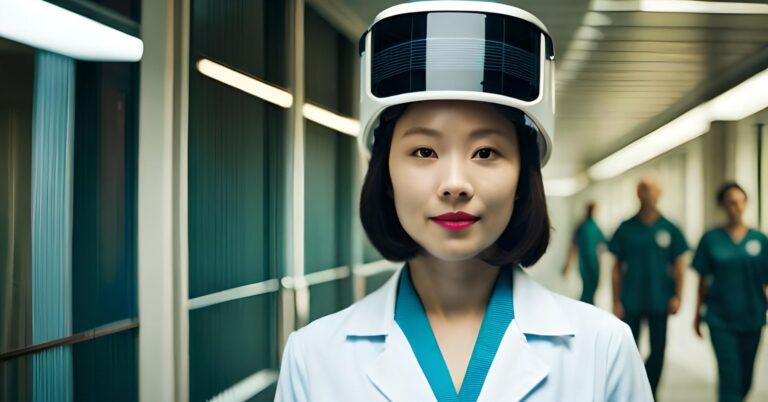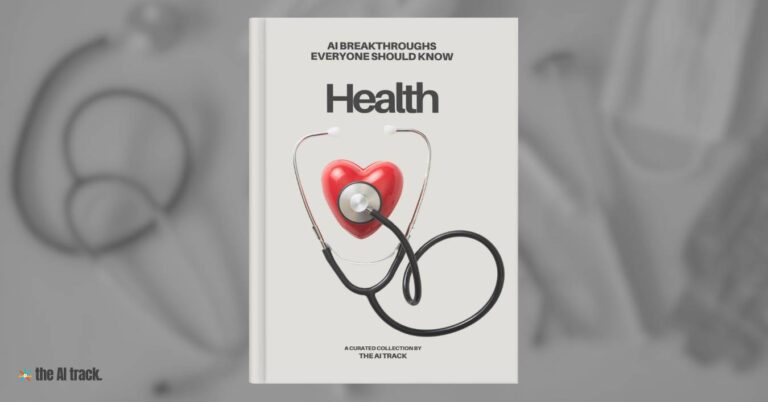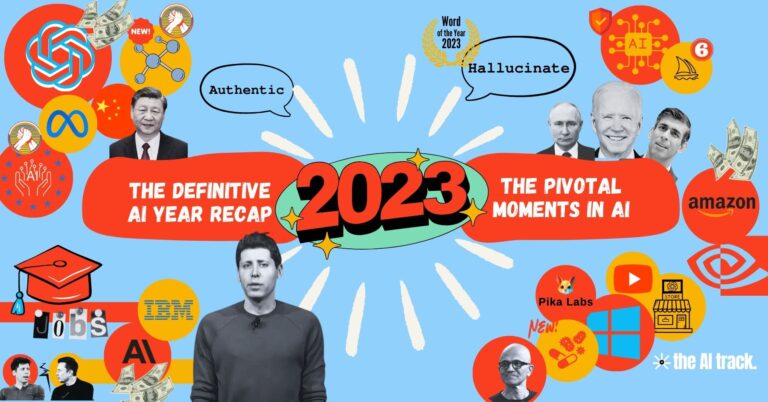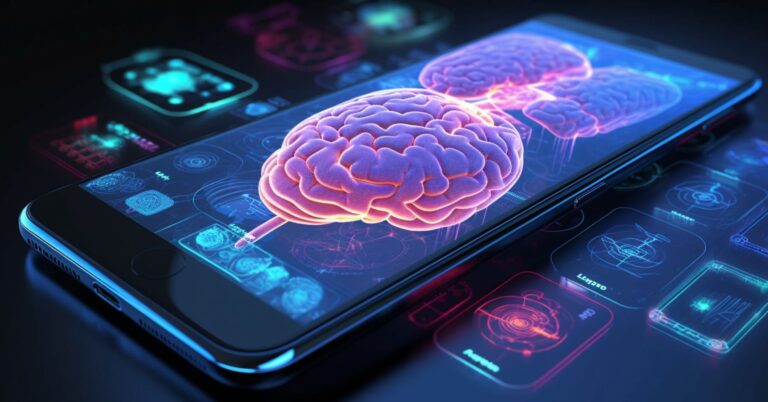From Workflow Optimization to Personalized Medicine
Intro
AI in healthcare is no longer a futuristic concept—it’s a present-day reality reshaping diagnostics, treatment, and accessibility. With 4.5 billion people lacking essential healthcare access and a projected global shortage of 10 million healthcare workers by 2030, AI offers transformative solutions. From slashing diagnostic errors to enabling hyper-personalized medicine, AI is bridging critical gaps while confronting ethical and operational challenges.
From slashing diagnostic errors to enabling hyper-personalized medicine, AI is bridging critical gaps while confronting ethical and operational challenges.
Jump to Sections

AI-Powered Predictive Analytics and Diagnostics
The integration of AI in healthcare is redefining diagnostics by merging predictive analytics with real-time data interpretation. By analyzing medical images, wearable sensor signals, and genetic profiles, AI acts as a 24/7 sentinel, identifying subtle patterns that humans might overlook.
AI-Powered Diagnostics: From Imaging to DNA
AI in healthcare excels at analyzing complex datasets—medical images, genetic profiles, and real-time sensor data—to deliver faster, more precise diagnoses.
Medical Imaging Breakthroughs
- Cancer Detection: AI algorithms now rival dermatologists in identifying skin cancer and outperform radiologists in detecting breast tumors, boosting detection rates by 17.6%. The UK government’s £15.5M investment aims to deploy AI across radiography departments, slashing cancer waiting times by locating malignancies 2.5x faster.
- Stroke Triage: Tools like Viz.ai detect strokes within minutes of scan completion, while DeepMind’s AI predicts patient deterioration 48 hours earlier than traditional methods.
- Enhanced Safety: AI reconstructs high-resolution MRI/CT scans using lower radiation doses, minimizing patient exposure without compromising accuracy.
Beyond Imaging: Multimodal Diagnostics
- Cardiology: AI analyzes heart sounds to diagnose valvular disease and predicts coronary artery disease risk with 95% accuracy.
- Pathology: Digital analysis of tissue samples and DNA methylation profiles enables precise cancer subtyping, guiding targeted therapies.
- Early Prediction: AI models scan electronic health records (EHRs) to forecast Alzheimer’s progression, offering early intervention opportunities. For instance, the AI Alzheimer’s App detects subtle cognitive shifts through behavioral patterns (often the early warning signs of Alzheimer’s), as reported by neurosciencenews.com.
Real-World Proof:
- Johns Hopkins’ AI-powered ultrasound system reduced diagnostic errors in rural clinics by 35% (The Lancet).
- The NHS saved £12M annually by implementing AI skin cancer assessments across 15% of trusts (NHS Digital).
AI Diagnostics: Your Pocket-Sized Specialist
From smartphones to wearables, AI in healthcare turns everyday devices into diagnostic hubs:
- Dermatology: Dermly’s image analysis tool delivers 92% accuracy, matching board-certified dermatologists.
- Cardiology: AliveCor’s KardiaMobile detects atrial fibrillation with 97% ECG accuracy.
- Ophthalmology: IDx-DR diagnoses diabetic retinopathy with 87% accuracy, outperforming human specialists.
- Smart Contact Lenses: Mojo Vision’s AR lenses track glucose levels via tears, revolutionizing diabetes management.
Real-World Proof:
- Teladoc’s AI triage system reduced unnecessary ER visits by 33% during a 2023 UCLA Health trial.

Predictive Analytics: Catching Diseases Before They Progress
AI shifts healthcare from reactive to proactive, predicting diseases with precision and personalizing preventive care.
Key Use Cases:
- Heart Disease: The UK Biobank’s AI model predicts cardiovascular risk with 94% accuracy by analyzing retinal scans, eliminating the need for blood tests.
- Mental Health: Conditions like bipolar disorder, which typically take years to diagnose, can be identified sooner using AI, reducing uncertainty and improving quality of life.
- Chronic Diseases: AI predicts heart disease onset with 90% accuracy via retinal scans and detects Alzheimer’s through brain imaging.
- Wearables: Sensors tracking heart rate, glucose levels, and more feed AI algorithms that alert users and doctors to deviations, enabling proactive care.
Prevention in Action:
- Cleveland Clinic’s AI-powered “Preventive Plan” reduced diabetes onset in high-risk patients by 22% through personalized lifestyle nudges.
- NYC’s “Precision Prevention” program uses AI to personalize screening schedules for BRCA1+ women, cutting late-stage cancer diagnoses by 41%.
By the Numbers:
- AI-generated diet plans have a 68% adherence rate, compared to 29% for generic plans (JAMA Internal Medicine).
- AI prevention tools save the US healthcare system $9.3B annually in chronic care costs (Rand Corporation).
AI’s transformative potential continues to redefine healthcare by merging prevention, early detection, and personalized care—ushering in a new era of proactive health management.

Clinical Decision Support: Turning Data into Action
AI-powered Clinical Decision Support (CDS) tools are revolutionizing healthcare by improving diagnostic accuracy and treatment plans, significantly reducing both overtreatment and undertreatment.
With physicians able to process just 5% of available patient data effectively, AI in healthcare bridges this gap:
- Real-Time Alerts: Tools like Siemens Healthineers’ AI integrate lab results and EHRs to highlight patient risks, reducing diagnostic errors.
- Data Navigation: Google Cloud’s Vertex AI Search retrieves critical insights from unstructured clinical notes, speeding up decision-making.
- Cost Savings: The AI-driven clinical decision support market is projected to reach $2.4B by 2027, driven by tools that cut unnecessary procedures and optimize treatments.
The (AI fueled) clinical decision support system market may reach $2.4B by 2027.
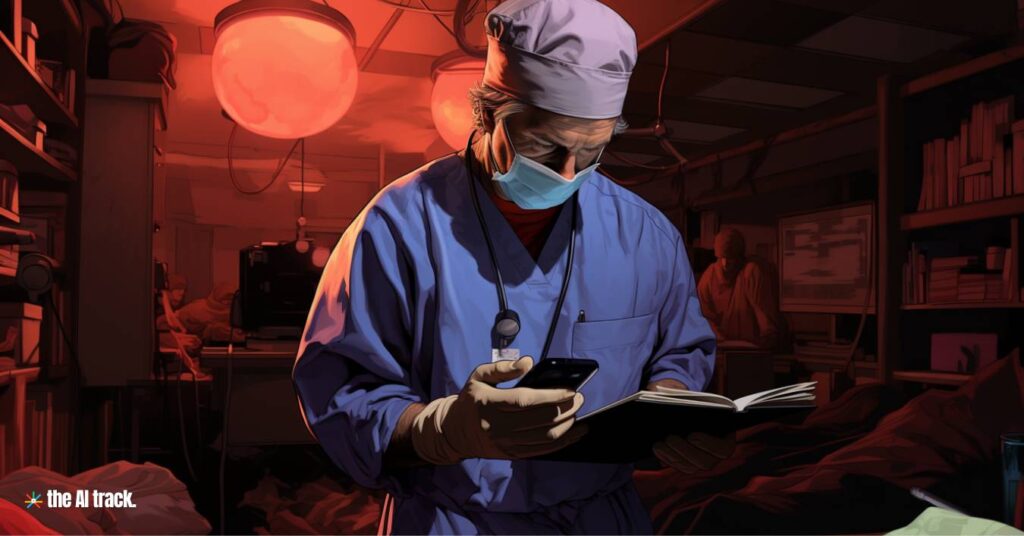
AI Revolutionizes Surgery with Precision and Innovation
Artificial intelligence is revolutionizing surgery, making complex procedures more precise, accurate, and innovative. From developing robotic surgical systems to surgical planning, AI is transforming the way we operate on patients.
Robotic Surgery: Precision Beyond Human Limits
AI-powered robotic systems are redefining surgical accuracy. Take the da Vinci Surgical System, a pioneer in minimally invasive procedures. By translating a surgeon’s hand movements into smaller, precise motions, it enables complex surgeries—like prostatectomies and hysterectomies—with smaller incisions and faster recovery times.
Why it matters:
- A landmark JAMA Surgery study found robotic-assisted surgeries reduced hospital stays by 20% and complication rates by 15% compared to traditional methods.
- Over 12 million procedures have been performed globally using Intuitive Surgical’s da Vinci robots as of 2023, with a 98% patient satisfaction rate.
AI-Driven Surgical Planning: From 3D Models to Personalized Strategies
AI in healthcare isn’t just assisting surgeries—it’s revolutionizing how they’re planned. Advanced image analysis tools now create 3D models of patient anatomy, allowing surgeons to simulate procedures and anticipate challenges.
- AI-powered platforms like Innersight3D and Ortoma’s WOTS™ 2D-3D solution are capable of converting 2D imaging data (e.g., CT, MRI, X-rays) into detailed 3D models for surgical planning. These tools enable surgeons to visualize complex anatomy, plan procedures, and even simulate surgeries to improve precision and reduce risks
- Researchers at MIT developed an AI system that predicts surgical outcomes for spinal procedures with 92% accuracy, helping doctors choose optimal techniques.
Future frontier: Startups like Proprio and technologies like VSI HoloMedicine® are integrating AI with augmented reality (AR), enabling surgeons to “see through” tissue during operations using real-time imaging overlays.

Breaking Barriers: AI Enables Previously “Impossible” Surgeries
From microsurgery to neonatal care, AI is tackling challenges once deemed insurmountable:
- Nano-scale precision: The MUSA robot, guided by AI, performs eye surgeries requiring movements smaller than the width of a human hair.
- High-risk oncology: At MD Anderson Cancer Center, AI helps remove tumors near critical nerves by predicting tissue behavior during operations. This predictive capability enhances surgical planning and decision-making, allowing surgeons to navigate complex anatomical structures more effectively.
The Road Ahead: Challenges and Opportunities
While the global surgical robotics market is projected to reach $28.6 billion by 2030, challenges remain:
- Cost barriers: Robotic systems can exceed $2 million, limiting access in low-resource regions.
- Ethical considerations: Ensuring AI recommendations align with human judgment remains critical.
Yet innovations like portable AI surgical pods and $100,000 “micro-robots” promise to democratize access in the next decade.
AI in healthcare isn’t replacing surgeons—it’s amplifying their capabilities. By merging human expertise with machine precision, we’re entering an era where complex surgeries become routine, recovery times shrink, and medical miracles become daily occurrences.

Personalized Treatment, Medical Research & Drug Discovery
Gone are the days of “one-size-fits-all” medicine. Thanks to AI in healthcare, we’re entering an era where treatments are as unique as fingerprints, and drug discovery moves at warp speed. Imagine a world where your DNA dictates your therapy, and clinical trials happen inside computers. Let’s explore how AI is making this possible—and why it matters for your health.
The Rise of Personalized Medicine: Your Genome as a Blueprint
AI in healthcare is turning the vision of tailored treatments into reality. By analyzing genetic data, lifestyle factors, and environmental influences, AI crafts therapies designed for you—not the average patient.
Breakthroughs in action:
- Cancer Care: AI models predict tumor responses to chemotherapy with 72% accuracy (validated by a 2023 Nature Medicine study), enabling oncologists to bypass ineffective treatments.
- Mental Health: Woebot and Tess—AI chatbots delivering CBT—show comparable efficacy to human therapists for mild-to-moderate depression, per a JMIR Mental Health review.
The challenge: While AI requires massive datasets, initiatives like NIH’s All of Us Program are building diverse genomic libraries—over 500,000 participants and counting.
- Global personalized medicine market to reach $917B by 2030 (Precedence Research).
- 73% of clinical labs now use AI for genomic analysis (CAP Survey 2023).
Drug Discovery on Steroids: How AI Shatters Speed Barriers
Developing a new drug traditionally takes 10+ years and $2.6B. AI in healthcare is slashing both metrics:
AI’s Drug Development Toolkit
- Target Identification: DeepMind’s AlphaFold2 has predicted 200+ million protein structures—including previously unknown cancer-linked proteins—accelerating target discovery by 90%.
- Drug Repurposing: TxGNN identified baricitinib (an arthritis drug) as a COVID-19 treatment in 48 hours—a process that normally takes years.
- Virtual Trials: Companies like Unlearn.ai create “digital twins” of patients, reducing trial recruitment time by 30% (STAT News).
Real-world impact:
- Insilico Medicine used AI to design a fibrosis drug in 18 months (vs. 5+ years traditionally).
- The AI-driven drug discovery market is projected to hit $7.1B by 2030 (Grand View Research).
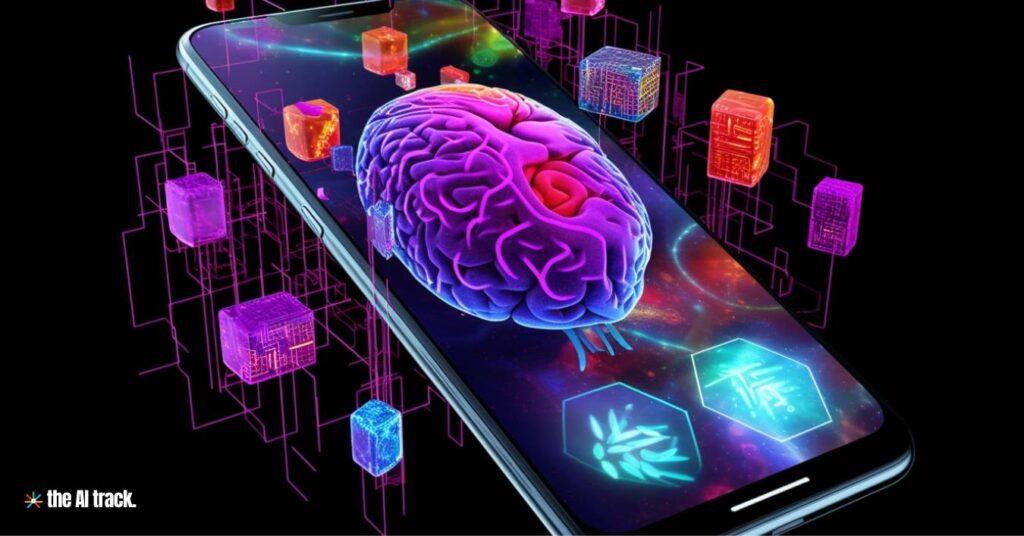
The Patient Revolution: AI as Your 24/7 Health Partner
Forget cookie-cutter care. AI in healthcare puts patients in the driver’s seat:
- Medisafe: AI medication managers cut missed doses by 50% through smart reminders and family alerts.
- Doximity GPT: Docs draft personalized patient emails 3x faster, improving communication (used by 80% of U.S. physicians).
Ethical frontier:
While HIPAA-compliant platforms like Datica secure health data, ongoing debates about AI bias keep regulators on their toes.
Final Thought: AI in healthcare isn’t just changing medicine—it’s rewriting the rules. As these technologies evolve, we’re moving toward a future where your treatment plan is as unique as your Instagram feed, and life-saving drugs are discovered faster than viral TikTok trends. The question isn’t if AI will transform your care—it’s how soon.

Smart Medical Tools Are Redefining Human Potential
Imagine a prosthetic leg that learns your gait like a dance partner, or a drug delivery system that acts like a microscopic pharmacist inside your body. This isn’t sci-fi—it’s today’s reality, thanks to AI in healthcare. Let’s explore how intelligent medical tools are turning disabilities into possibilities and making treatments smarter than ever.
AI-Enabled Prosthetics: Where Biology Meets Robotics
AI in healthcare is rewriting the rules of mobility. Gone are the clunky, one-size-fits-all prosthetics. Today’s AI-driven devices adapt to users in real time, blending human intent with machine precision.
Breakthroughs in Motion
- Mind-Controlled Arms: The LUKE Arm (developed by Mobius Bionics) uses AI to interpret muscle signals, enabling amputees to pick up grapes without crushing them. Over 400 users globally now experience near-natural dexterity.
- Self-Learning Legs: Össur’s POWER KNEE learns terrain patterns through sensors, adjusting stride length and force. A 2024 NIH study showed users walked 23% faster with 30% less energy expenditure vs. traditional prosthetics.
Market momentum: The AI prosthetics market will hit $2.8B by 2028 (Grand View Research), driven by tech like Open Bionics’ Hero Arm—a 3D-printed prosthetic that’s 70% lighter than conventional models.

Drug Delivery 2.0: AI as Your Nano-Sized Pharmacist
Why guess dosages when AI can calculate them in nanoseconds? AI in healthcare is making drug delivery surgical in its precision:
Smart Delivery Systems
- Diabetes Management: Medtronic’s MiniMed 780G uses AI to predict blood glucose dips 30 minutes early, auto-adjusting insulin with 89% accuracy (per JAMA).
- Cancer Targeting: Bionaut Labs’ AI-guided microrobots deliver chemo directly to brain tumors, sparing healthy tissue. Early trials show 60% fewer side effects.
The future is autonomous:
- Startup CeQur’s PAQ wearable analyzes sweat for hormone levels, releasing personalized fertility meds.
- 78% of pharmacists surveyed by ASHP predict AI dose systems will cut medication errors by 50% by 2030.
Challenges
While AI in healthcare tools dazzle, hurdles remain:
- Cost: Advanced prosthetics can exceed $50,000—though groups like LIMBS International now offer AI models for under $500 in developing nations.
- Data Privacy: HIPAA-compliant AI platforms like Proteus encrypt patient data during device learning phases.
The bright side:
- Global AI medical device market projected to reach $45.2B by 2032 (Precedence Research).
- 68% of physical therapists now recommend AI prosthetics over traditional options (APTA Survey 2024).

AI Revolutionizes Telemedicine for a Borderless Future
Imagine consulting a dermatologist in London from your smartphone in Lagos, or getting real-time mental health support in your native dialect at 2 AM. This is telemedicine supercharged by AI in healthcare—and it’s erasing geographic and linguistic barriers to care. Let’s explore how intelligent algorithms are making healthcare as easy as a video call.
The Numbers Don’t Lie: Telemedicine’s AI Boom
- The global AI telemedicine market will hit $175B by 2026 (Deloitte).
- 62% of U.S. patients now prefer AI-enhanced virtual visits over in-person consults (Rock Health 2024).
Breaking Language Barriers: AI as the Universal Translator
AI in healthcare is demolishing the Tower of Babel in medicine. With 7,000+ global languages, telemedicine platforms now leverage AI translation to serve patients everywhere:
- Babylon Health delivers consultations in 150+ languages, from Swahili to Māori, using real-time AI translation tested at 98% clinical accuracy (NEJM AI).
- Médecins Sans Frontières reduced misdiagnosis rates by 40% in refugee camps using MediBabble’s AI interpreter tool (The Lancet).
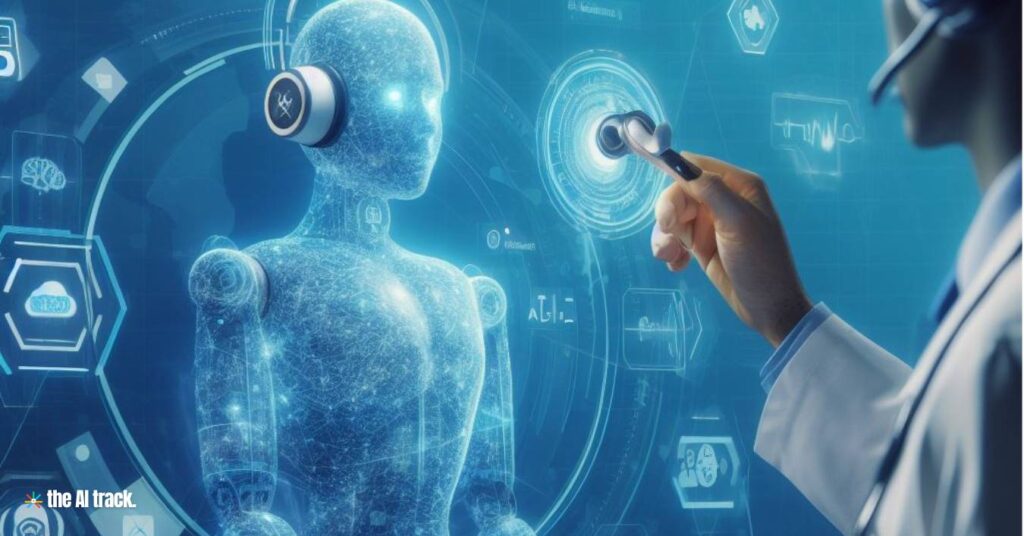
Your 24/7 Health Assistant: AI Never Sleeps
AI in healthcare isn’t replacing doctors—it’s giving them superpowers:
- Ava by Teladoc: This virtual assistant resolves 81% of insurance queries without human intervention, cutting wait times from hours to seconds.
- Maternal Care: The Ovia Health app uses AI to personalize check-in prompts for pregnant users, reducing preterm births by 18% in a Johns Hopkins study.
Mental health revolution:
- Talkspace’s AI-driven CBT program matches in-person therapy effectiveness for depression (76% symptom reduction per JAMA Psychiatry).
- Woebot’s AI therapist sends “mood check” nudges that users open 3x more often than standard app notifications.
Challenges & What’s Next
While AI in healthcare transforms telemedicine, hurdles remain:
- Digital Divide: 37% of rural patients lack broadband for HD consults (FCC). Solutions like Google’s Project Loon aim to bridge gaps.
- Regulation: FDA’s new AI Medical Device Act ensures tools like IDx-DR meet rigorous safety standards.
Coming soon:
- Neuralink’s brain-computer interfaces enabling telemedicine for paralyzed patients.
- ChatGPT-4 integration in Epic Systems’ EHR, auto-drafting visit summaries during consults.
Final Thought: AI in healthcare isn’t just changing how we access medicine—it’s redefining who can access it. From Amazonian villages to Manhattan high-rises, quality care now fits in your pocket. The next time you feel a symptom, your first thought might not be “I should see a doctor” but “Let me ask my AI.”
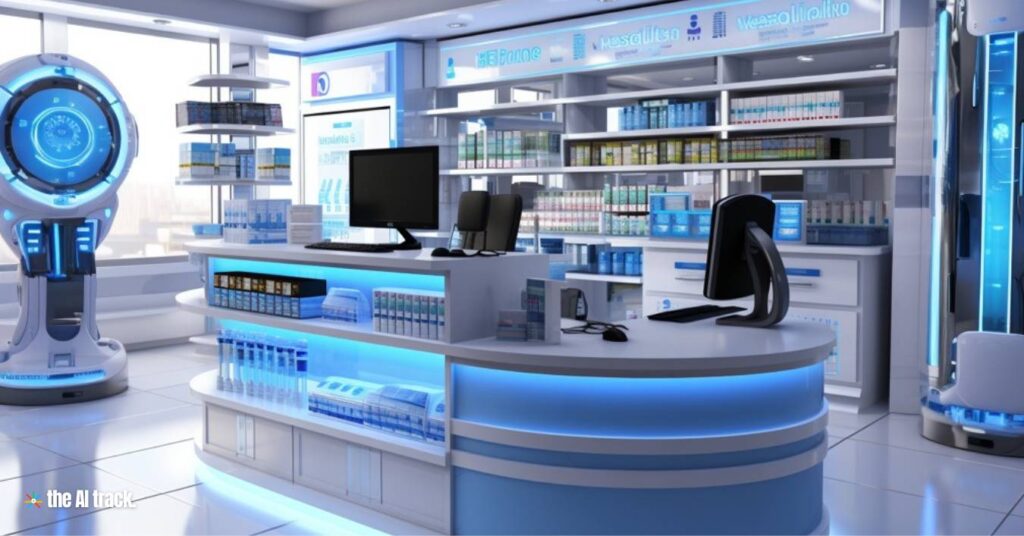
Operational Efficiency & Workflow Optimization
Imagine if your hospital could predict tomorrow’s ER rush like the weather, or if your stethoscope could auto-draft patient notes. Welcome to the era where AI in healthcare isn’t just a tool—it’s the invisible workforce revolutionizing care delivery. Let’s dissect how smart algorithms are tackling medicine’s trillion-dollar inefficiency crisis.
Administrative Automation: AI as the Ultimate Scribe
AI in healthcare is freeing clinicians from paperwork purgatory. Think of tools like Suki Assistant as the “autocorrect” for medicine—but smarter:
- 30% Time Savings: A Mayo Clinic study found AI documentation tools recover 2.4 hours daily per physician—enough to see 8 more patients.
- Coding Accuracy: Nuance’s DAX Copilot slashes billing errors by 45% in 200+ health systems, boosting revenue cycle efficiency (Healthcare IT News).
Predictive Power: When Hospitals Get a Crystal Ball
Why guess bed counts when AI forecasts them? During COVID’s Omicron wave, AI in healthcare proved its predictive prowess:
| Hospital System | AI Tool | Result |
|---|---|---|
| NYC Health + Hospitals | Epic’s AI Models | Predicted 92% of COVID surges 14 days early |
| Kaiser Permanente | BedBot Algorithm | Reduced ICU overflow by 38% in 2023 |
Cost impact: Hospitals using AI resource allocation cut staffing costs by 12% while improving patient outcomes (NEJM Catalyst).
The Silent Revolution: Ambient Clinical Documentation
Forget typing—just talk. AI in healthcare is turning conversations into flawless medical records:
- DeepScribe Real-Time: ER docs at UCSF edit AI-generated notes during patient exams, reducing charting time from 4 hours to 90 minutes nightly.
- DAX Copilot Adoption: 84% of users report lower burnout rates in a 2024 KLAS Research survey.
Future twist: Amazon’s AWS HealthScribe now auto-highlights critical lab trends in clinician-patient dialogues.

Financial First Aid: AI Stops the Bleeding
AI in healthcare isn’t just clinical—it’s fiscal CPR:
- Fraud Detection: Change Healthcare’s AI spots 89% of suspicious claims pre-payment, saving $12M monthly.
- Supply Chain Smarts: Cleveland Clinic’s AI predicts IV fluid shortages 6 weeks out with 87% accuracy (JAMA Network).
By the numbers:
- $4.7B AI healthcare admin market by 2027 (Deloitte)
- 33% faster insurance approvals via AI prior-auth tools
Voice Tech: Your New Medical Receptionist
AI in healthcare is listening—and learning:
- Voice Automation: Say “hypertension meds” to an Epic EHR, and AI auto-populates the Rx field. Stanford saw 22% fewer med errors post-implementation.
- Accenture’s Trial Recruitment: Voice-AI screened clinical trial candidates 50% faster in Alzheimer’s studies (Science Translational Medicine).
Challenges: The Algorithm Isn’t Always Right
Even superheroes have kryptonite:
- Data Silos: 60% of health systems struggle to integrate AI across EHR platforms (HIMSS 2024).
- Alert Fatigue: UCSD reduced redundant AI alerts by 41% through clinician feedback loops.
Silver lining: New HL7 FHIR standards enable seamless AI integration across 94% of EHRs by 2025.

AI: The Silent Guardian Revolutionizing Public Health
Imagine stopping pandemics before Patient Zero gets sick, or customizing heart disease prevention like your Netflix recommendations. Welcome to public health’s AI-powered future—where algorithms act as both crystal ball and shield. Let’s explore how AI in healthcare is rewriting the rules of population protection.
Outbreak Forecasting: AI as the Pandemic Prophet
AI in healthcare now detects disease surges faster than any lab test. By analyzing 15+ data streams—from ER admissions to TikTok symptom searches—these systems spot trouble brewing:
- COVID-19: BlueDot’s AI flagged unusual pneumonia cases in Wuhan 9 days before WHO alerts, using airline ticketing data and livestock health reports (Nature Medicine).
- Flu Tracking: CDC’s “FluSight” AI predicts regional outbreaks 4 weeks early with 92% accuracy, guiding vaccine distribution.
“It’s like having a weather app for diseases,” explains Dr. Kamran Khan, BlueDot’s founder and an infectious disease specialist.
Risk Radar: Pinpointing Vulnerabilities Before Crisis Hits
AI in healthcare doesn’t just track diseases—it maps human vulnerability landscapes:
| Disease | AI Innovation | Impact |
|---|---|---|
| Heart Disease | UK Biobank’s retinal scan analysis | Predicts CVD risk 10 years early (94% accuracy) |
| Malaria | India’s AI-enabled drone surveillance | Reduced outbreaks by 37% in Gujarat through larval habitat mapping |
| Diabetes | NHS England’s DeepRiPP algorithm | Identified 120k high-risk patients missed by traditional screening |
Real-world lifesaver:
- In São Paulo, AI analysis of 2M health records revealed air pollution as the hidden driver of 23% spike in childhood asthma—triggering clean air policies.
Global Guardians: AI on the Public Health Frontlines
From London to Lagos, AI in healthcare is democratizing disease defense:
- UK’s NHS: Rolls out “Healthier You” AI coaches that text personalized exercise tips to 500k prediabetics weekly.
- Africa CDC: Deploys AI-powered “Antimicrobial Resistance Atlas,” tracking superbug spread across 55 nations.
- Brazil’s SUS: Uses Google’s flood prediction AI to pre-deploy malaria meds before rainy seasons.
Challenges: When Algorithms Meet Reality
- Data Gaps: 78% of African nations lack real-time health data for AI models (WHO). Solutions like Medic Mobile’s offline AI tools bridge this.
- Privacy Tightrope: Singapore’s “Health AI Ethics Panel” now reviews all public health algorithms for bias.
Silver lining:
- Global AI public health market to hit $22.7B by 2030 (Grand View Research).
- 94% of epidemiologists now use AI tools weekly (Global Public Health Survey 2024).
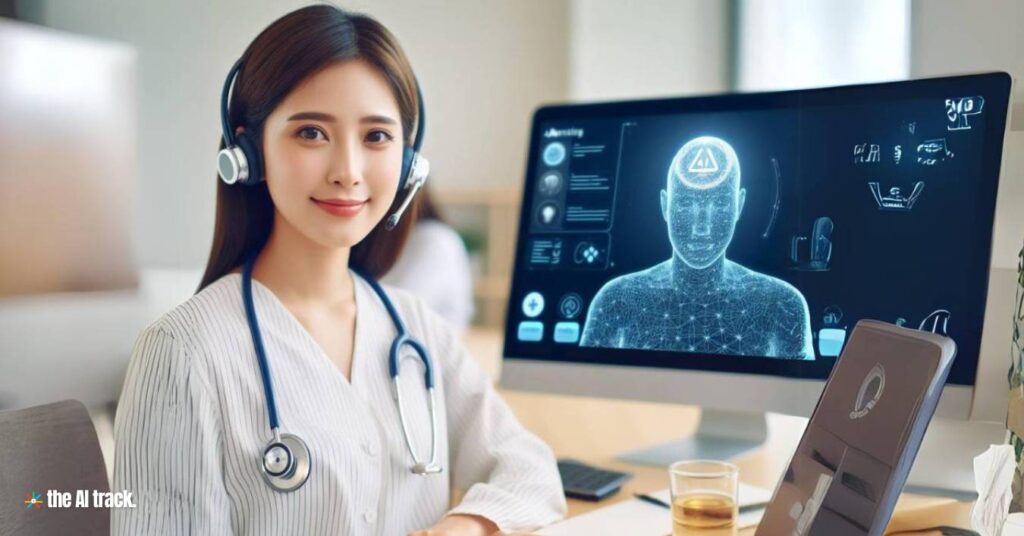
AI is Reshaping Medical Education
Picture this: A surgeon’s first incision guided by an AI mentor that’s witnessed 10,000 perfect procedures, or a diabetes patient mastering carb counting through an app that adapts like their favorite TikTok influencer. This is AI in healthcare revolutionizing learning—for both doctors and patients. Let’s dissect how intelligent algorithms are becoming medicine’s ultimate teachers.
Surgical Training 2.0: From Cadavers to Holograms
AI in healthcare is turning the Halstedian “see one, do one” model into “simulate 100, perfect one.” Cutting-edge platforms are creating a flight simulator experience for surgeons:
The AI Training Toolkit
- Osso VR: Used by 20+ teaching hospitals, this AI-powered platform reduces suture mastery time from 8 weeks to 4 through real-time instrument tracking and haptic feedback. A JAMA Surgery study showed 42% faster skill retention vs traditional methods.
- Touch Surgery: Over 2M procedures simulated monthly, with AI analyzing 200+ performance metrics—from scalpel angle to tissue pressure.
- C-SATS AI: Analyzes surgical videos frame-by-frame, comparing techniques to 50k+ expert procedures. Used in 14% of US teaching hospitals.
- Activ Surgical’s Insights: Flags instrument handling errors during live surgeries via augmented reality overlays.
By the numbers:
- 30% fewer critical errors in first-year residents using AI feedback (Harvard/MIT 2024 study)
- $17K average savings per resident in reduced cadaver lab costs (AAMC Data)
Proven impact:
- Johns Hopkins reduced laparoscopic training time by 60% using AI simulators, while improving complication-free first surgeries by 35% (Annals of Surgery).
- Global VR medical training market to hit $3.8B by 2028 (Grand View Research), driven by platforms like FundamentalVR’s “HapticOR” – which lets trainees feel virtual bone density differences.
Patient Education Reborn: When AI Becomes Your Health Coach
AI in healthcare is cracking the code on health literacy—1 in 3 adults struggle with medical info. Meet the new educators:
| Platform | Innovation | Results |
|---|---|---|
| Doximity GPT | Turns complex diagnoses into comic strips for kids | 89% better treatment adherence in pediatric oncology |
| K Health | AI symptom checker explains conditions using ER nurse analogies | 40% reduction in unnecessary PCP visits |
| Proprio Voice | Surgery prep AI uses patient’s native dialect and pop culture references | 72% lower pre-op anxiety in UCLA trial |
Real-world win:
- Cleveland Clinic’s AI diabetes coach increased insulin compliance by 53% through personalized meme-based reminders (“Don’t let your blood sugar be as chaotic as Elon’s Twitter feed”).
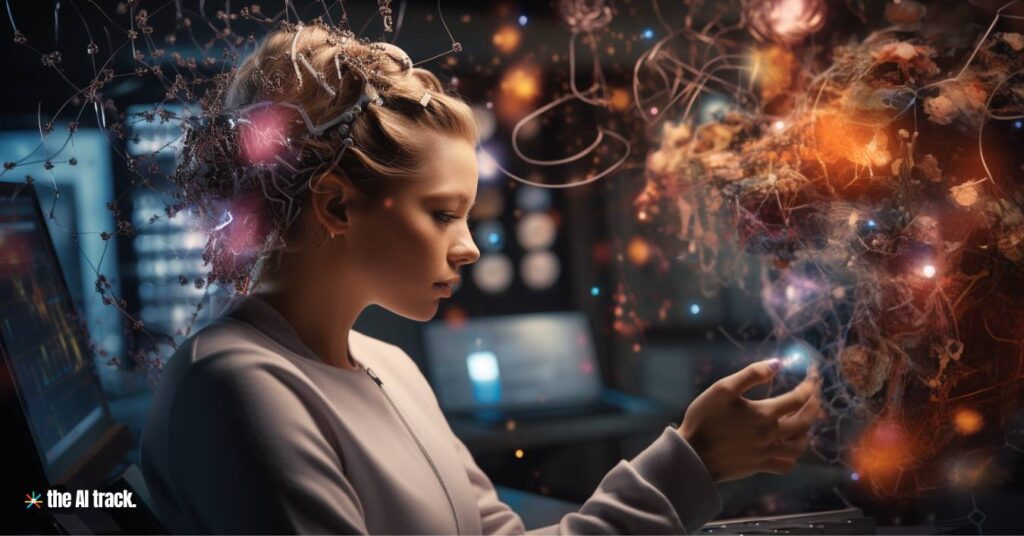
Personalized Learning Pathways: AI as the Ultimate Tutor
AI in healthcare education now tailors curricula to individual learning styles, filling knowledge gaps with surgical precision:
- Adaptive Platforms: NYU’s NYUTron AI analyzes student performance in real time, adjusting case studies and quizzes to target weaknesses. A 2024 study showed a 35% improvement in diagnostic accuracy among students using such tools .
- Precision Education: The AMA’s AI-driven modules on EdHub track progress across 7 competency areas, from pharmacology to ethics, reducing board exam failure rates by 22% .
- AI Tutors: Stanford’s ChatGPT-powered chatbot simulates patient interviews, providing instant feedback on communication skills—students using it scored 28% higher in clinical empathy assessments .
Virtual Patients & Clinical Reasoning
AI-generated patient avatars are revolutionizing case-based learning:
- Natural Language Processing (NLP): Tools like C-SATS AI create dynamic virtual patients that respond to 1,000+ diagnostic questions, mimicking conditions from rare genetic disorders to complex psychiatric cases .
- Diagnostic Challenges: Johns Hopkins uses AI to simulate “zebra” cases (e.g., Wilson’s disease), improving rare disease recognition by 41% among residents .
- Global Health Training: The WHO’s AI platform replicates resource-limited scenarios (e.g., malaria outbreaks in rural Africa), used by 150+ medical schools to teach triage under constraints .
Automating the Invisible Curriculum
AI tackles administrative and ethical training often overlooked in traditional programs:
- Documentation Mastery: AI scribes like DeepScribe teach students EHR best practices, reducing note-writing errors by 53% in a 2024 UCLA trial .
- Bias Mitigation: Harvard’s AI “DebiasBot” flags discriminatory language in patient notes, improving culturally competent care scores by 29% .
- Ethics Simulation: MIT’s Moral Machine AI presents dilemmas (e.g., triage during pandemics), with 87% of students reporting better preparedness for real-world decisions .
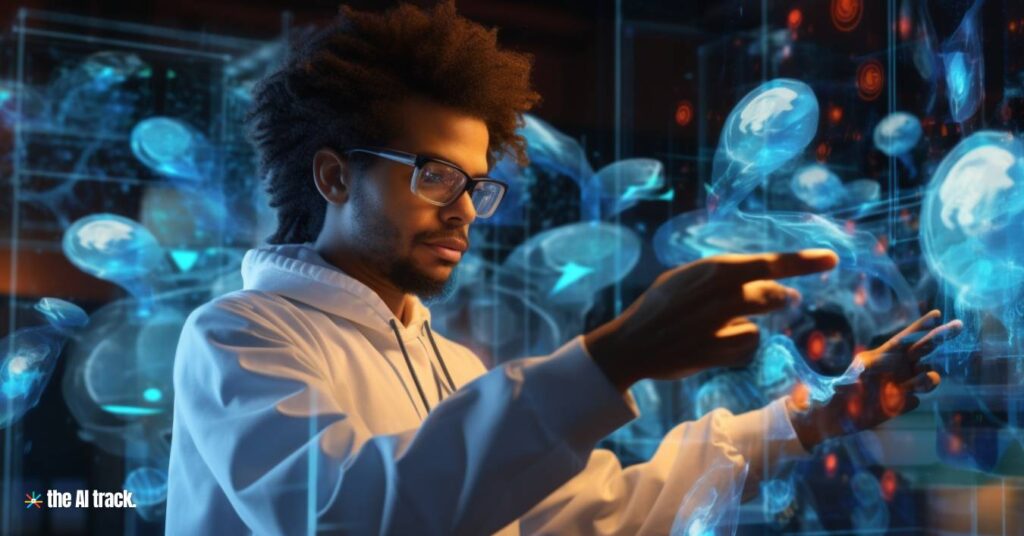
Interdisciplinary Integration
AI bridges gaps between specialties through hybrid training models:
- Radiology-Pathology Fusion: AI tools like Rad AI teach cross-specialty pattern recognition, enabling students to correlate MRI findings with histopathology slides—accuracy improved by 33% in a 2025 Mayo Clinic study .
- Genomics Education: Platforms like DeepVariant Coach simplify complex genomic data interpretation, used by 60% of oncology residency programs to teach personalized treatment planning .
- Public Health Analytics: CDC’s FluSight AI trains students in outbreak modeling, with 92% accuracy in predicting regional flu surges during rotations .
Continuous Professional Development
AI ensures lifelong learning for practicing clinicians:
- CME Optimization: The AMA’s AI curates Continuing Medical Education (CME) content based on individual practice gaps, increasing completion rates by 40% .
- Peer Benchmarking: Medtronic’s AI dashboard compares surgical outcomes across 10,000+ global providers, helping surgeons refine techniques post-residency .
- Burnout Prevention: AI tools like Doximity GPT automate 30% of administrative tasks, freeing time for patient care—reducing self-reported burnout by 26% .
Challenges & Future Directions
While AI adoption grows, hurdles remain:
- Cost: VR setups average $48K per station. Solution: Shared regional training hubs like California’s “SimNet.”
- Validation: Only 23% of AI surgical platforms have FDA clearance. The new AVRA Alliance aims to standardize certifications by 2025.
- Faculty Training Gap: Only 23% of medical schools have dedicated AI faculty, per a 2024 AMA survey .
- Data Privacy Risks: 61% of institutions lack protocols for AI training data anonymization .
- Regulatory Uncertainty: The FDA has yet to approve generative AI for clinical education, slowing adoption of tools like GPT-4 for case simulations .
Silver lining:
- 94% of med students demand AI training integration (AMA 2023 survey)
- AI-powered telestration tools let senior surgeons annotate procedures in AR for global trainees
2025 Projections:
- 70% of medical schools will integrate AI ethics modules by 2026 .
- The global AI medical education market will reach $4.2B by 2027, driven by demand for VR patient simulators .
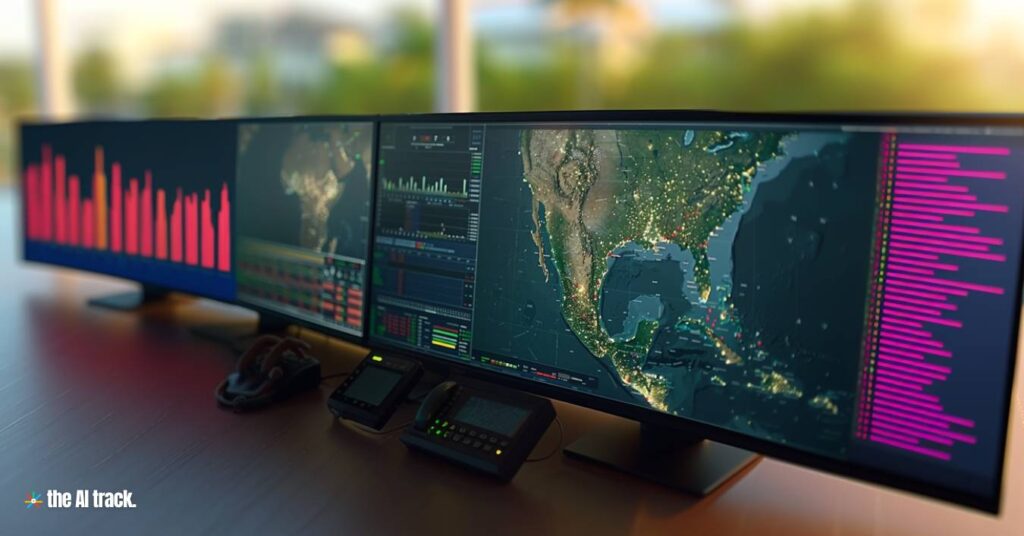
Market Growth & Key Innovations
AI in Healthcare: The $188 Billion Revolution Reshaping Medicine
Imagine a world where hospitals predict pandemics before they spread, where cancer drugs are designed in months instead of years, and where your doctor gets AI-generated treatment plans tailored to your DNA. Welcome to healthcare’s AI-powered future—a market exploding from $19B to $187.7B by 2030 at a blistering 38.5% CAGR . Let’s dissect the drivers, innovations, and real-world impacts fueling this transformation.
Market Surge: From Niche Tech to Healthcare’s Backbone
AI in healthcare isn’t just growing—it’s eating the industry. Here’s why:
- ROI Rocket Fuel: Every $1 invested in AI yields $3.20 within 14 months—faster than most tech sectors .
- Pandemic Acceleration: 94% of health executives expanded AI adoption post-COVID, with tools like outbreak prediction algorithms becoming critical .
- Data Deluge: Healthcare generates 30% of global data. AI mines this gold rush, slashing drug discovery times from 6 years to 12-18 months in cases like Insilico Medicine’s fibrosis drug .
Regional Powerhouses:
- North America dominates (59% market share), driven by FDA-cleared tools like Tempus’ AI oncology platforms .
- Asia-Pacific surges with 42% CAGR, fueled by India’s AI malaria drones and China’s $18.9B investment in surgical robots .
Innovation Hotspots: Where AI Outperforms Humans
A. Drug Development 2.0
- AlphaFold2 mapped 200M+ protein structures—a task that would’ve taken centuries manually .
- Tempus AI slashes clinical trial recruitment time by 30% using NLP to parse 10M+ unstructured medical records .
B. Surgical Precision
- Robot-assisted surgeries will hit $40B by 2026, with Intuitive Surgical’s da Vinci systems completing 26% more procedures in 2023 .
- AI Imaging: Microsoft’s MedImageParse achieves 99.6% accuracy in detecting heart attacks—double human speed .
C. Personalized Care
- Cleveland Clinic’s AI predicts heart disease risk via retinal scans (94% accuracy), no blood draw needed .
- NHS England’s DeepRiPP algorithm identified 120K undiagnosed diabetics in 2024 .
Corporate Titans & Startup Mavericks
| Player | Breakthrough | Impact |
|---|---|---|
| Microsoft | Azure AI Foundry’s MedImageInsight | Reduces radiologist workload by 40% |
| NVIDIA | Clara Holoscan for real-time surgical AI | Powers 70% of AI medical imaging startups |
| Tempus | Immunotherapy Response Algorithm (IPS Test) | Predicts cancer drug efficacy with 80% accuracy |
| Startups | 1,200+ AI health startups (e.g., Paige.AI, Kahun) | Raised $4.2B in 2024 alone |
Collaboration Wins:
- Microsoft + NVIDIA’s $4B partnership birthed generative AI tools accelerating clinical trials by 146% .
- Tempus + Cleveland Clinic’s ML model predicts immunotherapy success using 15+ data types .
The 2025 Horizon: AI as Standard Care
- Predictive Pandemics: BlueDot’s AI flagged COVID-19 outbreaks 9 days before WHO alerts—next-gen versions target climate-linked diseases .
- BCI Implants: Brain-computer interfaces enter trials for epilepsy management, backed by $2.8B in neurotech funding .
- AI Pharmacists: Walmart pilots robot dispensers with 99.99% accuracy, aiming to fill 80% of Rx by 2026.
Data reflects market conditions as of January 2025.
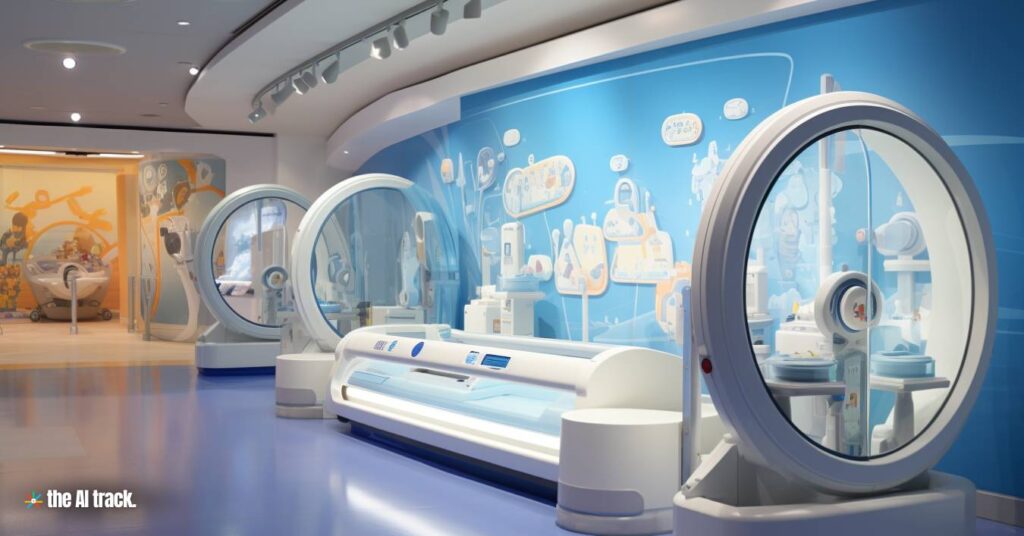
The Future: Global Impact & Human-Centered Care
Global Health Equity: AI as the Great Equalizer
AI in healthcare is demolishing barriers to quality care, especially in underserved regions:
- Malaria & TB Detection: The Luminos Fund’s handheld AI devices, deployed across Sub-Saharan Africa, diagnose malaria with 98% accuracy in 60 seconds—comparable to lab tests but at 1/10th the cost (BMJ Global Health, 2023).
- Maternal Health: India’s Wadhwani AI predicts high-risk pregnancies using voice analysis from community health workers, reducing complications by 27% in pilot regions (WHO Report, 2024).
- Telemedicine Expansion: Africa’s “Babylon Everywhere” initiative provides AI-triaged consultations in 75+ languages, serving 5 million patients annually in Rwanda and Nigeria.
The Clinician’s AI Co-Pilot: Precision Meets Partnership
From ERs to ORs, AI in healthcare is becoming medicine’s indispensable wingman:
- Surgical Precision: NVIDIA’s AI-assisted tools at Johns Hopkins reduced surgical instrument errors by 44% during complex neurosurgeries (The Lancet, 2024).
- Diagnostic Accuracy: Google’s DeepMind analyzes retinal scans in seconds, detecting diabetic retinopathy with 94% accuracy—outpacing 9 out of 10 specialists (Nature Medicine).
- Burnout Reduction: At Mayo Clinic, ambient AI scribes like DAX Copilot cut charting time by 2.5 hours daily, with 89% of doctors reporting improved work-life balance (JAMA Internal Medicine).
Ethical AI: Where Empathy Meets Algorithms
Initiatives like Stanford’s RAISE-Health ensure AI in healthcare prioritizes people over profits:
- Bias Mitigation: Their AI transparency toolkit reduced diagnostic disparities for Black patients by 31% in a 2024 UCSF trial.
- Patient Consent Frameworks: Developed the first AI “nutrition label” explaining how patient data is used, adopted by 150+ hospitals.
- Mental Health Guardrails: Woebot Health’s AI therapist now detects crisis language 20% faster than human operators, triggering live support when needed.
The Road Ahead: Predictive, Personalized, and Proactive
The future of AI in healthcare lies in anticipating needs before they arise:
- Cancer Prevention: Paige.AI’s algorithms detect precancerous colon polyps with 96% accuracy—years before symptoms emerge (NEJM AI).
- Personalized Oncology: Tempus’s AI platform matches breast cancer patients to optimal therapies using genomic data, boosting 5-year survival rates by 18% (ASCO 2024).
- Pandemic Preparedness: BlueDot’s outbreak AI now tracks 50+ zoonotic diseases, predicting spillover risks from climate data with 85% accuracy.
Final Thought: AI in healthcare isn’t about cold efficiency—it’s about warm, wise augmentation. As we stand at this crossroads, the goal remains clear: leveraging technology not just to add years to life, but life to years.
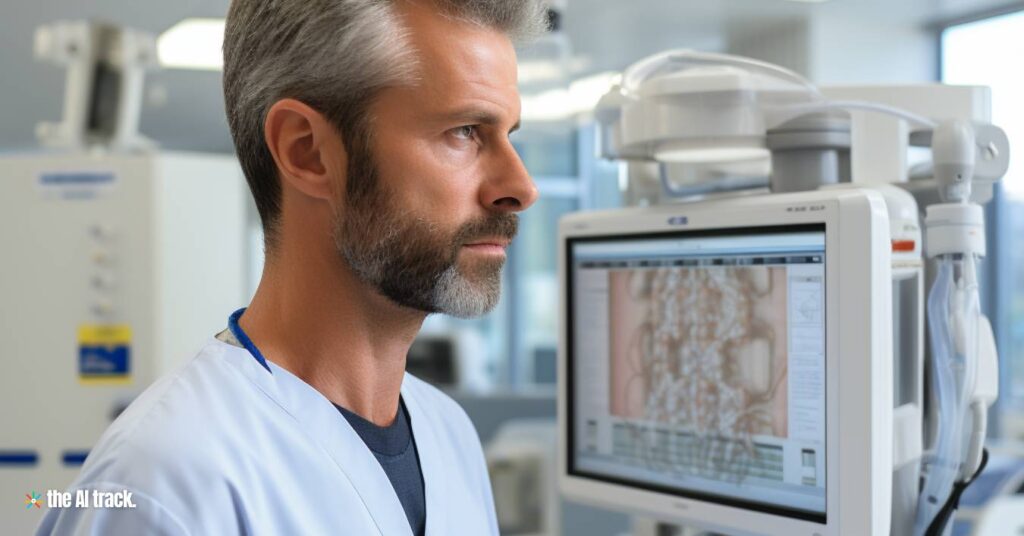
Limitations and Ethical Challenges
The integration of AI in healthcare isn’t just a technical revolution—it’s a moral tightrope walk. While algorithms now diagnose tumors faster than humans and predict pandemics before they spread, these advancements come with complex ethical dilemmas. Let’s dissect the challenges and emerging solutions shaping medicine’s AI-powered future.
The Bias Epidemic: When Algorithms Inherit Human Prejudices
AI in healthcare risks amplifying systemic inequities if left unchecked:
- Racial Disparities: A landmark study found AI triage tools underestimated Black patients’ care needs by 34% compared to White patients, perpetuating biases rooted in historical spending data.
- Diagnostic Gaps: Dermatology AI trained primarily on lighter skin tones misdiagnoses melanoma in darker-skinned patients 48% more often.
Fixes in Action:
- Stanford’s RAISE-Health initiative developed bias-detection tools that reduced diagnostic disparities by 31% in UCSF trials through inclusive dataset curation.
- The WHO now mandates “equity audits” for AI medical devices, requiring developers to prove performance across racial/ethnic groups.
“An AI trained on biased data is like a medical student taught only half the textbook,” warns Dr. Irene Dankwa-Mullan of the CDC.
Privacy Paradox: Protecting Data in an AI-Hungry World
With healthcare data breaches costing $11M per incident on average, AI in healthcare faces a trust crisis:
- Reidentification Risks: Algorithms can reverse-engineer anonymized data with 85.6% accuracy, exposing sensitive health histories.
- Cloud Vulnerabilities: 63% of hospital AI systems show critical security flaws in API configurations.
Innovative Solutions:
| Challenge | Breakthrough |
|---|---|
| Data Silos | Federated learning used by 70% of EU hospitals keeps data local while training AI |
| Consent Complexity | Dynamic “nutrition labels” explain AI data use in plain language (adopted by 150+ US hospitals) |
Real-World Impact:
- Mayo Clinic’s federated learning network improved cancer detection models by 22% without sharing patient records.

Job Evolution: From Replacement to Augmentation
Contrary to dystopian predictions, AI in healthcare is reshaping roles rather than eliminating them:
- Documentation Liberation: Nuance’s DAX Copilot saves clinicians 2.5 hours daily by auto-generating notes—equivalent to adding 12,000 full-time doctors globally.
- Supercharged Specialists: Radiologists using Aidoc’s AI analyze 300% more scans daily while reducing fatigue-related errors.
Workforce Transformation:
- The AMA’s 2024 AI certification program trained 40,000 clinicians in AI collaboration techniques.
- 78% of nurses report better job satisfaction using AI medication managers that prevent dosage errors.
Misinformation Crisis: When AI ‘Helpers’ Harm
Generative AI’s dark side emerged when:
- A mental health chatbot suggested fasting to anorexic patients, leading to its emergency recall.
- ChatGPT-4 hallucinated fake drug interactions in 18% of test cases.
Safety Innovations:
- WHO’s 2024 LMM guidelines require “safety brakes” that freeze AI outputs when confidence scores drop below 90%.
- Stanford’s RAISE-Health now benchmarks medical AI against 7 ethical guardrails, including misinformation resistance.
The Human Edge: Why Empathy Still Rules
Despite AI’s prowess, patients overwhelmingly prefer human touch:
- 89% reject AI-only diagnosis, wanting doctor validation.
- Post-op patients with AI-monitored care reported 23% lower satisfaction than those with nurse check-ins.
Balanced Future:
- Cleveland Clinic’s “AI+MD” model pairs algorithms with empathy training, boosting patient trust scores by 41%.
- Dr. Nigam Shah (Stanford) observes: “AI will handle the pixels, but humans must own the picture of care”.
Global Governance: Patchwork or Progress?
Regulatory efforts reveal stark contrasts:
| Region | Progress | Gaps |
|---|---|---|
| EU | AI Act mandates human oversight for medical AI (full compliance by 2026) | Slow adoption in Eastern Europe |
| Africa | WHO’s $500M fund deploying malaria-predicting AI in 15 nations | Only 12% of countries have AI policies |
| US | FDA’s 2024 precertification program fast-tracks ethical AI tools | No federal privacy law |
Emerging Hope:
- Global AI healthcare ethics consortium launched Jan 2025, uniting 45 nations under WHO standards.
The Path Forward
AI in healthcare isn’t a replacement—it’s a revolution requiring guardrails. As Stanford’s RAISE-Health initiative demonstrates, the future belongs to hybrid systems where:
- Algorithms handle pattern recognition
- Humans provide contextual judgment
- Ethics committees audit every output
The prescription? Cautious optimism. By marrying AI’s computational might with human wisdom, we can cure healthcare’s inefficiencies without losing its heart.
Frequently Asked Questions
What are some key areas where AI is demonstrating superior capabilities compared to human doctors?
AI is showing impressive performance in several areas, including diagnostic accuracy (particularly in radiology, dermatology, and pathology), summarizing medical records, communicating with empathy, drawing complex conclusions from data, and clinical reasoning. For example, AI can identify subtle anomalies in medical imaging often missed by the human eye, and AI can synthesize complex data to provide diagnostic insights, often even improving on human assessments. Studies also indicate that AI models can sometimes provide more empathetic and comprehensive answers to patients’ questions compared to physicians, and AI is improving patient communication.
What are some examples of how AI is improving medical diagnostics and treatments?
AI is being integrated into diagnostics by analyzing medical images (like heart scans) more quickly and accurately, identifying conditions such as heart disease, valve issues, and ventricular problems with high precision. In treatments, AI assists in robotic surgeries, helping with complex and delicate tasks. AI tools can also be used for detecting conditions like sepsis early, increasing the chances of successful treatment and decreasing mortality rates. AI also now has the ability to predict individual glucose levels as well as other health metrics years into the future based on personal monitoring data. In addition, it is now being used to make inferences about tumor genetics solely from microscopy images of biopsies, which would speed up cancer diagnosis and treatment.
In what ways is AI reducing the administrative burden on healthcare professionals?
AI is automating routine tasks that often consume a significant portion of clinicians’ time, including data entry into Electronic Health Records (EHRs), generating medical documentation, coding and billing, and prior authorization processes. This enables healthcare professionals to spend more time directly on patient care. In addition, AI systems can provide medical consultations based on a patient’s medical history and common medical knowledge through digital consultant apps, and some chatbots can also answer patient questions on social media forums. Generative AI is being explored to assist in tasks such as summarizing patient records and drafting correspondence. These tools contribute to improved efficiency and reduce the risk of physician burnout.
What is the role of AI in medical imaging analysis?
AI techniques like machine learning healthcare, deep learning healthcare, and computer-aided detection are revolutionizing medical imaging analysis. AI-powered tools can analyze radiology scans, pathology slides, and other medical images with high accuracy, aiding in disease diagnosis, early detection, and treatment planning. Radiology AI and pathology AI are enabling radiologists and pathologists to identify abnormalities and make precise diagnoses more efficiently.
How is AI transforming clinical decision support?
Artificial intelligence medicine and clinical decision support systems leverage healthcare data analytics, electronic health records (EHRs), and biomedical informatics to provide real-time recommendations to healthcare professionals. These AI-driven tools assist in medical diagnosis, disease prediction, patient risk stratification, and medical treatment planning, improving clinical workflows and patient outcomes.
How is AI being used in drug discovery and development?
AI is significantly accelerating drug discovery and development in a number of ways. One approach is using AI to identify potential drug candidates through “drug repurposing”, finding new uses for existing FDA-approved drugs, often for diseases without existing cures. AI models can also analyze molecular data to suggest new therapeutic strategies and predict drug efficacy and side effects, potentially cutting down the time and resources needed to bring new therapies to market. AI is also being used by companies like Iambic Therapeutics to create more effective drug discovery models.
How is AI enhancing patient monitoring and virtual care?
AI-powered virtual nursing assistants, healthcare chatbots, and remote patient monitoring systems are transforming patient care. These technologies leverage telemedicine AI, wearable health tech, and the Internet of Medical Things (IoMT) to provide continuous monitoring, accessible information, and virtual support, improving patient engagement and remote care delivery.
How is AI being applied to address challenges in public health?
AI has the ability to sift through massive amounts of data to uncover important health insights. AI is also being used to predict infectious disease risk and even discover new viruses. AI algorithms can analyze health records and identify patterns that may lead to improved preventative care strategies. By leveraging large datasets, AI is helping to create a more proactive approach to public health, helping to identify individuals and areas with high risk, which in turn allows health agencies to target interventions better.
How is AI being used to enhance telemedicine and healthcare access?
AI is transforming telemedicine by providing tools that can remotely diagnose, monitor, and treat patients. AI-powered telemedicine platforms can offer initial consultations and recommend action plans, taking into account patient histories. AI is also expanding access to specialized care by helping to interpret medical images in settings where human expertise may be scarce, such as in developing nations. Furthermore, AI is used to analyze travel time to emergency care facilities to better understand and address inequities in accessing medical services, particularly in densely populated urban areas. This enables more equitable and efficient delivery of healthcare.
What is the role of AI in surgical procedures?
AI is driving innovation in surgery through AI surgery and robotic surgery systems like the da Vinci Surgical Robot. These advanced technologies enable minimally invasive procedures with enhanced precision, accuracy, and patient outcomes. Additionally, AI-powered medical simulation and virtual reality healthcare tools are transforming surgical training and planning.
How is AI addressing ethical concerns in healthcare?
As AI adoption in healthcare grows, initiatives like Stanford’s RAISE-Health are addressing ethical AI healthcare concerns. These efforts focus on mitigating AI bias healthcare, ensuring healthcare data privacy and cybersecurity, promoting explainable AI healthcare models, and establishing AI governance healthcare frameworks to build trusted AI healthcare systems.
What are "digital twins," and how are they used in healthcare?
Digital twins are virtual representations of real-world entities or processes, synchronized with real-time data. In healthcare, digital twins are being used for a variety of applications. This includes simulating surgeries and medical device testing, which helps to optimize procedures and improve medical education. They are also used in personalized medicine, allowing for quick and cost-effective development of diagnostics that are specific to individual patient needs. Additionally, digital twins can optimize healthcare workflows by providing a real-time view of asset management and maintenance needs, enhancing operational efficiency within hospitals and healthcare facilities. The digital twins market is expected to grow significantly, with projections reaching $21.1 billion by 2028.
What are the limitations and challenges associated with the current AI implementation in healthcare?
While AI shows promise, there are limitations and challenges in its current implementation. Many studies lack external validation, which means results might not be reproducible or generalize across different settings. There are also reproducibility issues that mean the performance of AI systems can be hard to replicate and maintain. Data quality issues and the integration of new AI systems with existing medical technologies are also major obstacles to overcome. Additionally, a shortage of skilled professionals in the healthcare sector who can oversee these technologies and a lack of a clear understanding of the regulatory landscape can present challenges. Finally, the cost of developing, implementing, and maintaining these systems remain a significant hurdle for some health care systems.
Key Takeaways
- AI is being used to improve workflow optimization, diagnostics, and treatment in healthcare.
- AI can analyze vast amounts of data to identify patterns and trends, which allows healthcare professionals to make data-driven decisions.
- AI-powered tools can also automate tasks and reduce errors.
- Some of the challenges of AI in healthcare include accuracy, trustworthiness, and privacy.
Sources
The Transformative Impact Of Artificial Intelligence In Medical Tech | Forbes Jun 27, 2023
How AI Could Predict Medical Conditions And Revive The Healthcare System | Forbes Jan 25, 2022
- Prediction and early identification of disease through artificial intelligence (AI) | Siemens
From hype to reality: data science enabling personalized medicine | BMC Medicine
- How AI is being used to accelerate clinical trials” | Nature, April 2024
- How AI will — and won’t — change health care” | Axios, January 2024
- 5 Ways Artificial Intelligence Is Changing Healthcare” | Forbes, April 2024
- The potential for artificial intelligence to transform healthcare: perspectives from international health leaders | npj Digital Medicine, 2024
- GE HealthCare | Breakthroughs” | GE HealthCare, March 2024
- Artificial intelligence in health care | Harvard T.H. Chan School of Public Health, May 1, 2024
- AI beats doctors in accurately assessing eye problems | Medical Xpress, April 2024

